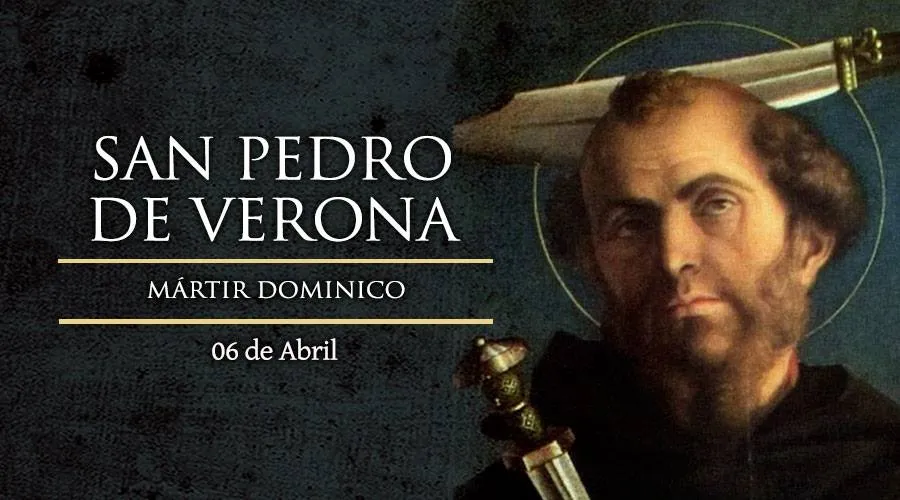
Saint Peter of Verona is considered the second saint of the Order of Preachers (Dominicans). He was a distinguished preacher who carried out his mission to the point of martyrdom. His preaching was dedicated to combating the heresy of the Cathars or Albigensians, who in the thirteenth century had spread their “Christian Manichaeism” with relative success throughout Western Europe, including central and northern Italy, where this saint was originally from.
St. Peter the Martyr, as he is also known, was born in Verona, Lombardy (Italy), in 1205. Although his parents were related to Catharism, Peter distanced himself from this doctrine due to his stay at the University of Bologna. After studying at the academic campus, he received the Dominican custom from Santo Domingo de Guzmán himself.
According to Blessed Santiago de la Vorágine, St. Peter was a great connoisseur of the Holy Scriptures and an example of purity, austerity and firmness in the defense of the faith. It is this hagiographer who points out that Pedro de Verona, even as part of a family “darkened by error”, knew how to “keep himself immune” to evil doctrine. Proof of this was his early entry into the Order of Preachers in the days when Santo Domingo de Guzmán, the founder of the Order, was still alive.
After completing his church training, he was ordained a priest. His evangelistic work led him to teach the correct Christian doctrine and to fight heresies in Vercelli, Rome, Florence, and other cities in northern Italy. He established the so-called “Associations of Faith” and the “Brotherhood for the Praise of the Virgin Mary” in Milan, Florence and Perugia.
In 1248 he was appointed prior of the Asti monastery and a year after the one in Piacenza. In 1251, Pope Innocent IV appointed him inquisitor of Lombardy and prior of Como. As his fame spread, his enemies made plans to get rid of him.
The plot against him was executed on April 6, 1252, when the Saint was returning from Milan to the monastery of Como, located very close to the city of Barlassina. Saint Peter of Verona was attacked by Carino de Balsamo, who struck him twice with an ax in the head in order to assassinate him. Pedro, while bleeding with all his might, wrote with his bloody finger on the ground, “I believe in God.”
On March 9, 1253, just one year after his death, he was canonized by Pope Innocent IV. His body was later transferred to Milan, and his remains rest today in the church of San Eustorgio. Its feast is celebrated every April 6.
More information: